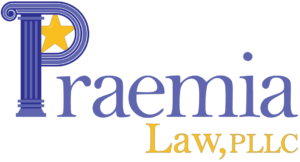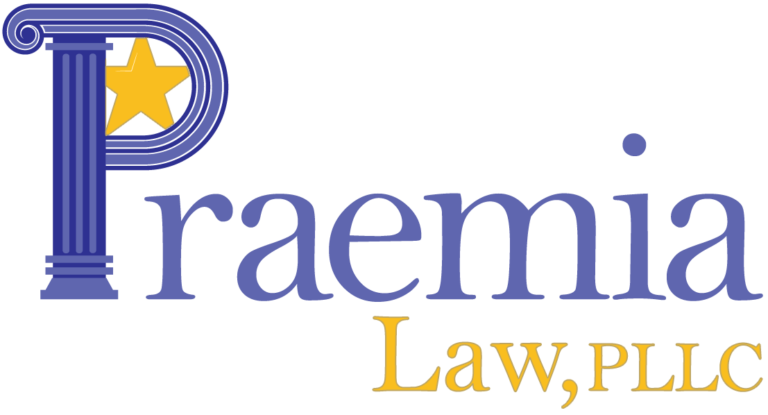Exit polling conducted on election day in Virginia last week indicates that education was a major issue motivating voters.[i] American Federation of Teachers union president Randi Weingarten and other teacher union officials campaigned hard for gubernatorial candidate Terry McAuliffe, who declared during a debate, “I don’t think parents should be telling schools what they should teach.”[ii] In the closing weeks of the campaign, McAuliffe opponent Glenn Youngkin made the statement a centerpiece of the rest of the campaign, emphasizing the growing power of teacher union officials and arguing for accountability in Virginia public schools.[iii]
Youngkin’s success on election night suggests that, at least at the polls, he won the argument, and the results may lead to greater scrutiny of local government decision-making with respect to schools, including closer examination of union demands for collective bargaining power. In 2020, Governor Ralph Northam and the General Assembly acted to authorize cities, counties, towns, and school boards to recognize and bargain with union officials over teachers’ and other public employees’ employment and service.[iv] The repeal of Virginia’s decades-old statute prohibiting unionization of local government employees became effective on May 1, 2021. Now, with fresh political winds apparently favoring parents’ influence, school boards and other local governing bodies face big questions about whether they will open the schoolhouse doors to greater union bargaining power.
Experience in other states that have enacted public-sector bargaining schemes suggests that expanding union officials’ power results in detrimental effects on education.[v] Substantial research indicates that compulsory unionism hurts schoolchildren, parents, taxpayers, and teachers. For example, University of Texas at Dallas economics professor Stan J. Liebowitz and research fellow Matthew L. Kelly found that “union strength . . . has a substantial and statistically significant negative relationship with student achievement.”[vi] Their research included analysis of union strength and student test performance in the states, and they scored states based in part on student test performance. They examined states’ relative rankings on a range of metrics and the consequences of a shift in union strength in public schools, concluding:
- [A] state [going] from having the weakest unions to the strongest unions . . . would move a state down about 45 percent of the way through this total range, or equivalently, alter the rank of the state by about 23 positions. This is a dramatic result. . . . This negative relationship suggests an obvious interpretation. It is well known that teachers’ unions aim to increase wages for their members, which may increase student performance if higher quality teachers are drawn to the higher salaries. Such a hypothesis is inconsistent with the finding here, which is instead consistent with the view that unions are negatively related to student performance, presumably by opposing the removal of underperforming teachers, opposing merit-based pay, or because of union work rules. [vii]
University of Chicago law professor John Lott and University of Florida economist Lawrence Kenny also proved what many parents and students know from their own experiences: students learn less in states with stronger teachers’ unions.[viii] Lott and Kenny looked at standardized tests taken by fourth- and eighth-graders in reading and math and found that, regardless of the subject or grade level and regardless of whether they focused on absolute scores or improvement between fourth and eighth grade, “an increase in teacher union dues and expenditures leads to lower student test scores.”[ix] Based on their research, they concluded:
- [S]tate-wide teachers’ unions are often successful in influencing state regulations on education by being the major contributors to candidates for the state legislature. The state-wide teachers’ unions that contribute more are expected to exercise more influence and thus be stronger unions. We . . . find that students in states in which the teachers’ union has high dues and high spending have lower test scores than students in states with low dues and spending. Union strength matters and indeed matters more than any other variable in our regressions.[x]
Monopoly bargaining power in the hands of teacher union bosses results in a variety of ills that challenge public education. For example, union officials routinely wield their bargaining power to perpetuate “single salary” schedules that frequently are a bad deal for teachers.[xi] Teachers qualified for hard-to-fill positions in subject areas such as calculus, chemistry, and English as a second language suffer with below-market pay caused by rigid union salary schedules.[xii] Many other educators with exceptional skills or with low seniority suffer the same fate.[xiii] Similarly, teacher union officials demand small class sizes because smaller class sizes typically mean more teacher hiring, which drives up teacher union membership and dues receipts. The problem for schools, students, and parents is that the empirical evidence largely fails to find that smaller student-teacher ratios and class size improve student performance.[xiv] Other priorities of union officials at the bargaining table include rules against firing teachers that are so extreme that some school systems have to warehouse hundreds of teachers who cannot be trusted in the classroom.[xv]
School boards and other local governing bodies in Virginia are grappling with how to comply with the new state bargaining statute and, at the same time, serve the interests of taxpayers, parents, students, consumers of government services, and public employees. Decision-makers would be wise to develop labor-relations strategies sooner rather than later. Some may consider, but resolve not to adopt, collective bargaining. The Clarke County Board of Supervisors, for example, adopted a broad resolution prohibiting the County Administrator and employees of the County from recognizing or bargaining with union officials.[xvi] Similarly, in response to a union’s claim for certification of a petitioned-for unit of firefighters and emergency medical personnel, the Portsmouth City Council adopted a comprehensive resolution providing that the City will not recognize any labor union as a bargaining agent of any public officers or employees.[xvii]
Other local governing bodies may enact comprehensive procedures for certification and decertification of unions, collective bargaining, resolution of disputes, and protections for individual employees, among other provisions. The City of Alexandria and Arlington and Fairfax Counties, for example, have adopted broad ordinances to facilitate unionization of teachers and other public employees, but as of this publication, no unions have been empowered as bargaining agents.[xviii] Still other governing bodies may instead wait and see whether a specific union will attempt to unionize workers and then respond. In the meantime, policy-makers may study available legislative options. For example, on October 18, 2021, the Richmond City School Board authorized a work group to study a proposed bargaining resolution, holding for a later time, if at all, any decision on the issue of whether to adopt a bargaining resolution.[xix] Whatever approach is taken by local governing bodies, the 2020 election results suggest that their decisions will receive close scrutiny from voters.
Timothy M. McConville, Esq. is a management-side labor relations attorney and President of Praemia Law, PLLC. He also serves as President and Chairman of the National Institute for Labor Relations Research. This article is for general informational purposes only and should not be relied upon or regarded as legal advice. Mr. McConville is available at 703-399-3603, ext. 1, and Timothy.McConville@praemialaw.com.
[i] Ariel Edwards-Levy, Independent voters favor Youngkin as he clinches victory in Virginia, CNN exit poll shows, CNN (Nov. 3, 2021) https://www.cnn.com/2021/11/02/politics/virginia-exit-polls/index.html (surveyed Virginia voters regarding the most important issues identified economy (33%), education (24%), taxes (15%), coronavirus pandemic (14%), and abortion (10%)).
[ii] Dana Goldstein, In Virginia, frustration with schooling during the pandemic played a part in Youngkin’s win, The New York Times (Nov. 3, 2021), https://www.nytimes.com/2021/11/03/us/elections/in-virginia-frustration-with-schooling-during-the-pandemic-played-a-part-in-youngkins-win.html.
[iii] Id.
[iv] Va. Code § 40.1-57.2 (2021).
[v] G. Gregory Moo, Power Grab – How the National Education Association is Betraying Our Children 112–13 (1999).
[vi] Stan J. Liebowitz & Michael L. Kelly, Fixing Bias in Current State K-12 Education Rankings, Cato Institute 12 (Nov. 13, 2018), https://www.cato.org/sites/cato.org/files/pubs/pdf/pa-854-updated.pdf.
[vii] Id.
[viii] Johnathan Lott & Lawrence W. Kenny, State teacher union strength and student achievement, 35 Econ. Educ. Rev. 93–103 (2013).
[ix] Id. at 102.
[x] Id.
[xi] National Education Association, 2019 Handbook 281, available at http://www.useaut.org/assets/docs/2019_NEA_Handbook.pdf.
[xii] Stan Greer, How Monopolistic Teacher Unionism is Undercutting Math and Science Education, National Institute for Labor Relations Research, Inc. (Nov. 29, 2017), https://nilrr.org/2007/11/29/how-monopolistic-teacher-unionism-undercutting-math-and-science-education/.
[xiii] Id.
[xiv] Liebowitz, supra note vi, at 13; Mallory Factor & Elizabeth Factor, Shadowbosses – Government Unions Control America and Rob Taxpayers Blind 140–41 (2012) (“Out of 112 studies researching the impact of class size on student performance, 103 studies concluded that smaller class size did not improve student performance at all.”).
[xv] Karen Matthews, 700 NYC teachers paid to do nothing, Associated Press (June 22, 2009), https://www.nbcnews.com/id/wbna31494936.
[xvi] Clarke County, Va., Collective Bargaining Resolution 2021-09R (June 15, 2021), available at https://www.clarkecounty.gov/home/showpublisheddocument/7769/637589133553188807 (see p. 78).
[xvii] Portsmouth, Va., Resolution Regarding Collective Bargaining of Public Employees and Officers 21-248(a) (Aug. 10, 2021).
[xviii] Fairfax County, Va., Collective Bargaining Ordinance (Oct. 19, 2021); Arlington County, Va., Code § 6-30 (2021); Alexandria, Va., Code § 2-5-67 (2021).
[xix] Olivia Jaquith, Richmond School Board approves committee to review collective bargaining agreement, ABC 8 News (updated Oct. 19, 2021), https://www.wric.com/news/education/richmond-school-board-approves-committee-to-review-collective-bargaining-agreement/; Jonell P. Lilly, Feedback/Notes on Draft Collective Bargaining Resolution, Remarks Prepared and Presented by Jonnell P. Lilly, School Board Attorney – Harrell & Chambliss, LLP (Oct. 18, 2021), https://go.boarddocs.com/vsba/richmond/Board.nsf/files/C7YS566CA99E/$file/10.18.2021%20JL-H%26C%20-%20Feedback%20on%20Draft%20Collective%20Barganing%20Resolution.pdf (recommending establishment of work group to study proposed resolution for authorization of recognition and bargaining).


